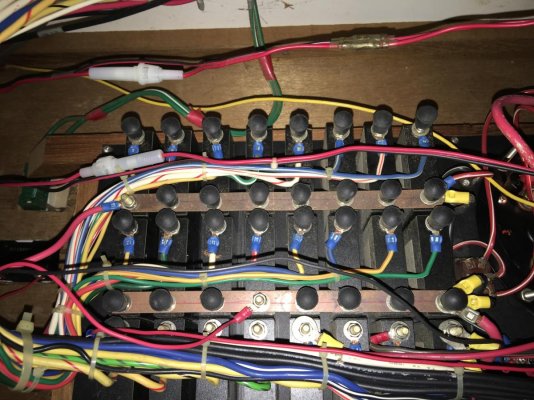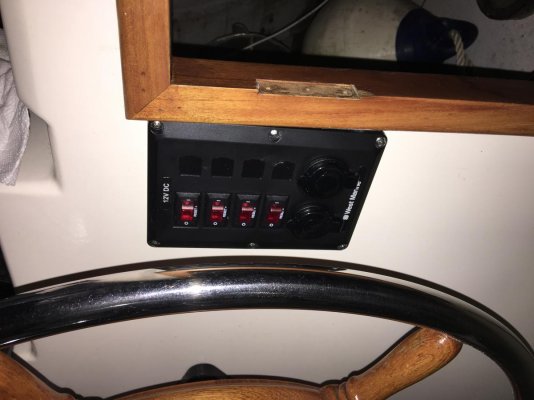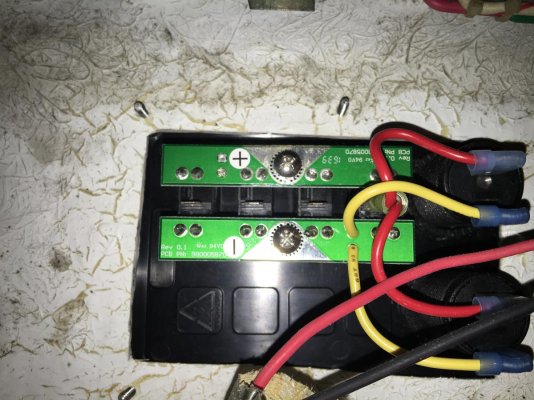Mark Myns
Veteran Member
- Joined
- Aug 31, 2015
- Messages
- 31
- Location
- USA
- Vessel Name
- Hoosier Daddy
- Vessel Make
- 38 Marine Trader Sundeck
I am putting in an auxiliary panel to control some new lights from my upper helm. I do not want to tap in at the upper helm because all of the electrical up there seems to be tied into the ignition and shuts down when I start the boat or if the key is off I have no power. My thought is to run a new lead from the main panel to the auxiliary panel and power the light off of that. I am going to have my spotlight and two side floods hooked to two of the switches. The third switch I have not decided on at this time, maybe safety floor lighting. All the lights will be LED except the spot light which is remote controlled. Looking at the main panel I am not sure how to connect the wires. I have a couple of breakers that are no longer in use and planned on using one. I am more knowledgeable with AC systems than DC. I assume I would hook the positive to the breaker post and the negative to the bar. I have a 1986 boat so obviously the wiring over the years appear to have been McGivered. I am starting to clean things up. I have included pictures of the backs of both panels and the front of the auxiliary. Any advice would be welcome. Thank you.



